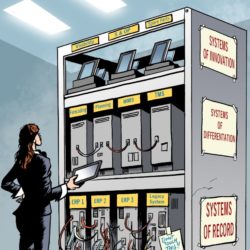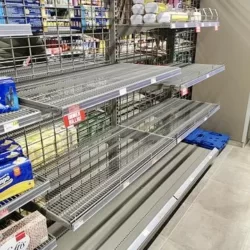Customs software vendors issue urgent warning

A major challenge looms for countless importers and exporters in Europe. This time it’s not about Brexit or President Trump’s international trade policies, but about the mandatory transition to the new customs declaration management system (DMS) in the Netherlands. At the country’s recent national customs conference, it became clear that any companies that aren’t ready in time run the risk of supply chain disruption.
By Marcel te Lindert
The Dutch Alliance for Customs Software (ADS) is made up of 16 software vendors who between them facilitate 60-70% of all customs declarations in the Netherlands. They are closely monitoring the developments relating to the DMS, which Dutch Customs will start working with at the beginning of next year. DMS is replacing not only the current declaration system (AGS), but also the current rules for things like periodic declarations and the storage of goods in bonded warehouses. This will require the 16 vendors to make significant adjustments to their solutions, and they are keen to get started. There’s just one problem: it is not yet entirely clear which adjustments will be necessary. “The ongoing uncertainty means that software vendors are unable to start developing new or adapted software,” said Richard Groenendijk, General Manager of AEB Nederland and chair of ADS (pictured).
New data model
The DMS is being introduced in response to the Union Customs Code (UCC) which came into force in the EU on 1 May 2016. It stipulates that all declarations within the EU Customs Union must be submitted to the customs authorities digitally. There is a new dataset based on the EU Customs Data Model. “That data model was presented in May 2019, but it has still not been approved by the European Parliament, so there is still a chance that things may be amended,” stated Groenendijk, who went on to add that 163 of the 222 data fields are set to change. Some data fields will disappear completely and some will be replaced by others. “For example, the ‘Incoterms location’ field is currently a text field, but it’s being changed to a code field,” he said.
Eventually everyone will be forced to use DMS, even those companies that don’t currently use AGS – i.e. companies that save up their declarations and submit them all once a month, either electronically or as hard copies, via the periodic declaration system (GPA/SPA). That will no longer be possible as of 1 July 2021, so they will need to have chosen one of the two scenarios – or, in the case of companies with bonded warehouses, three scenarios – supported by DMS. It remains to be seen whether they opt for a new authorization procedure with a heavy administrative burden or switch to normal declaration procedures with a higher likelihood of checks. “Before making their decision, companies will need to think carefully: What does this new approach mean for me?” commented Jan Akkermans, the customs consultant who represents ADS in meetings with Dutch Customs. “Only then should you talk to the customs authorities. You should involve the software vendor in your discussions too.”
Ten working days
The 1 July 2021 deadline still sounds a long way off; it’s over 18 months away. But as Groenendijk and Akkermans talked the conference delegates through the maze of procedures and scenarios, it became clear that appearances can be deceptive. Groenendijk showed how a group of 250 companies will have just six months to adapt or update their customs software. “This means that the software vendors have a maximum of ten working days per company to arrange the transition to DMS,” he said. Akkermans echoed that point, saying “We have just six months to transition from something that has been built up over the past 20 years. That’s an extremely short space of time with a lot riding on it.”










